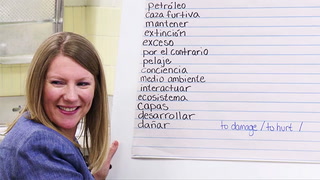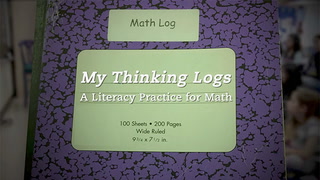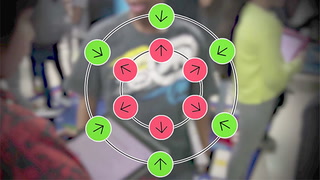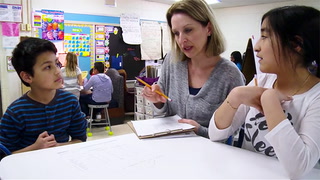Series Bridging Content & Language: Strategies from a Dual Language Classroom: My Thinking Logs: A Literacy Practice for Math
Save to My Resources
PLEASE CREATE A NEW ACCOUNT OR LOG IN TO ACCESS THIS CONTENT
Enjoy your first video for free. Subscribe for unlimited access.
Have questions about subscribing?
Click Here to learn more about individual subscriptions.
Click Here to learn more about School and Institution access.
Discussion and Supporting Materials
Thought starters
- Why is it important for students to talk it out before writing?
- What supports are in place to help students write out their ideas?
- Why is this an especially effective strategy for English Language Learners?
In Partnership With:

School Details
Banting Elementary School2019 Butler Drive
Waukesha WI 53186
Population: 472
Data Provided By:

Teachers
Kris Carey
Math / 5 / Teacher
Newest
|
4 MIN
|
5 MIN
|
5 MIN
UNCUT CLASSROOMS
| TCHERS' VOICE
English Language Arts














8 Comments
Elizabeth Jones Nov 7, 2019 1:54am
My name is Elizabeth Jones and I am a third grade teacher at Seward Elementary. This is my 19th year of teaching. I currently have a class of 17 students. We have been working on personalized learning for the last few years now, which is something we had all been doing beforehand, but we are trying to focus on certain aspects each year. This year our focus is on data and incorporating it in the classroom. Last year we focused more on student reflection. This is why I selected the video, My Thinking Logs. I love the idea of having the students send their reflections through pictures to the teacher, but still having a journal where they store their thinking as well. With the focus this year being on student awareness of their data, adding these pieces into their thinking journals would also be a great benefit.
Kathy Renfrew Oct 16, 2017 2:16pm
Kris Carey Oct 16, 2017 2:01pm
Gretchen Vierstra Oct 16, 2017 1:18pm
Kathy Renfrew Oct 16, 2017 12:59pm